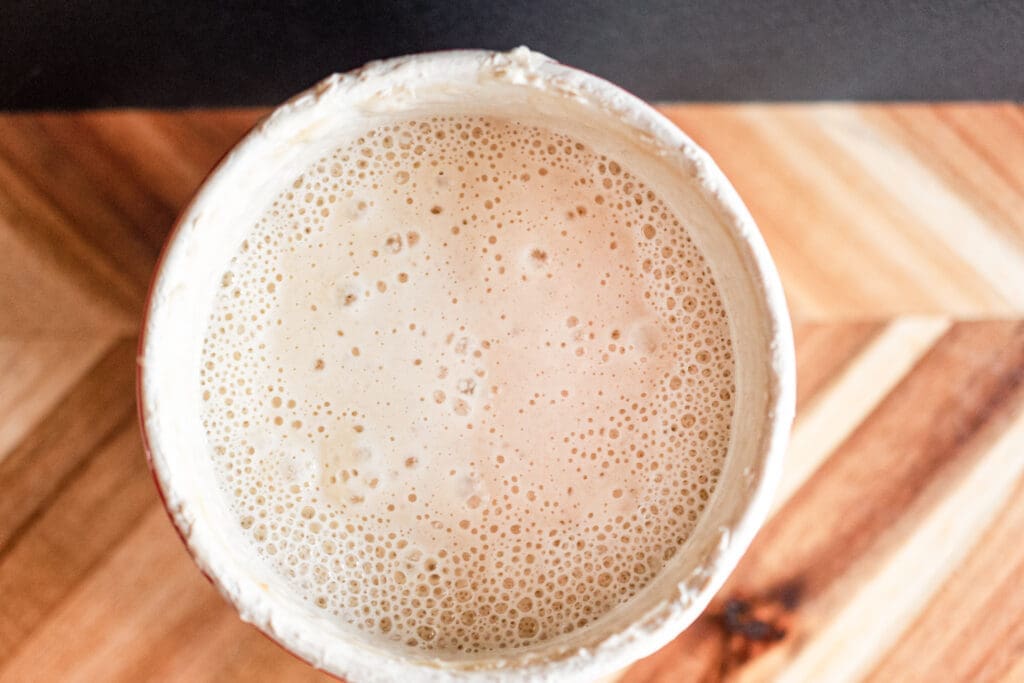New to Sourdough baking?
Are you new to sourdough baking and intrigued by the idea of creating your own sourdough bread at home? Sourdough baking is not only a delicious culinary endeavor but also a deeply satisfying and rewarding experience.

Diving into the world of sourdough can seem intimidating for beginners. Fear not! In this guide, I’ll outline the three most important pieces of information to help you kickstart your sourdough baking journey.
Understanding the Basics of Sourdough Starter
The cornerstone of sourdough baking is the sourdough starter, a naturally fermented mixture of flour and water. It’s what gives sourdough its characteristic tangy flavor and leavening properties. Here are some key points to keep in mind:
a. Creating Your Starter: You can either make your own starter from scratch or acquire some from a friend or a reputable source. To create your own, simply mix equal parts of flour and water and let it ferment at room temperature, feeding it regularly until it becomes active and bubbly.
b. Feeding and Maintenance: Once your starter is established, it needs regular feeding to stay healthy and active. This typically involves discarding a portion of the starter and replenishing it with fresh flour and water on a daily or weekly basis, depending on your baking frequency.
c. Understanding Starter Hydration and Consistency: Sourdough starters can have different hydration levels, ranging from thick and stiff to thin and pourable. The hydration level affects the texture and behavior of your dough, so it’s essential to understand and maintain the consistency of your starter according to your baking preferences.
- Mastering the Art of Dough Fermentation:
Fermentation is the magical process by which wild yeast and lactobacilli bacteria present in the sourdough starter work together to leaven and flavor the dough. Proper fermentation is crucial for achieving a well-developed flavor and texture in your bread. Here’s what you need to know:
a. Patience is Key: Sourdough baking is not a quick process. It requires patience and careful observation of your dough as it ferments. The ideal fermentation time can vary depending on factors such as room temperature, starter activity, and dough hydration. Aim for a slow and steady rise to allow the flavors to develop fully.
b. Bulk Fermentation vs. Final Proofing: Bulk fermentation refers to the initial rise of the dough after mixing, while final proofing occurs after shaping the dough into loaves. Both stages are critical for developing flavor and structure. Pay attention to signs of fermentation, such as increased volume, bubbles, and a slightly domed surface during bulk fermentation, and a noticeable increase in size and a puffy texture during final proofing.
c. Experimentation and Observation: Every batch of sourdough is unique, and learning to read your dough is an essential skill for sourdough bakers. Keep a journal to record observations such as fermentation times, dough consistency, and baking results. This will help you refine your techniques and achieve consistent results over time.
Perfecting Your Baking Technique
The final stage of sourdough baking is the baking process itself, where you transform your fermented dough into a crusty, flavorful loaf of bread. Here are some key tips for success:
a. Preheat and Steam: Preheat your oven thoroughly and create steam during the initial stages of baking to promote oven spring and develop a crispy crust. This can be achieved by placing a pan of hot water in the oven or using a Dutch oven with a tight-fitting lid.
b. Scoring Your Loaves: Before baking, score the surface of your loaves with a sharp blade to control the expansion of the dough and create an attractive pattern. This allows the steam to escape and prevents the crust from tearing.
c. Practice and Persistence: Like any skill, sourdough baking takes practice to master. Don’t be discouraged by setbacks or imperfect loaves. Use each baking experience as an opportunity to learn and improve. With time and dedication, you’ll become a confident sourdough baker capable of producing beautiful loaves of bread.
In conclusion, getting started with sourdough baking may seem daunting at first, but armed with the right knowledge and a willingness to learn, anyone can master the art of sourdough. By understanding the basics of sourdough starter, mastering the art of dough fermentation, and perfecting your baking technique, you’ll be well on your way to baking delicious homemade sourdough bread that will impress family and friends alike. Happy baking!